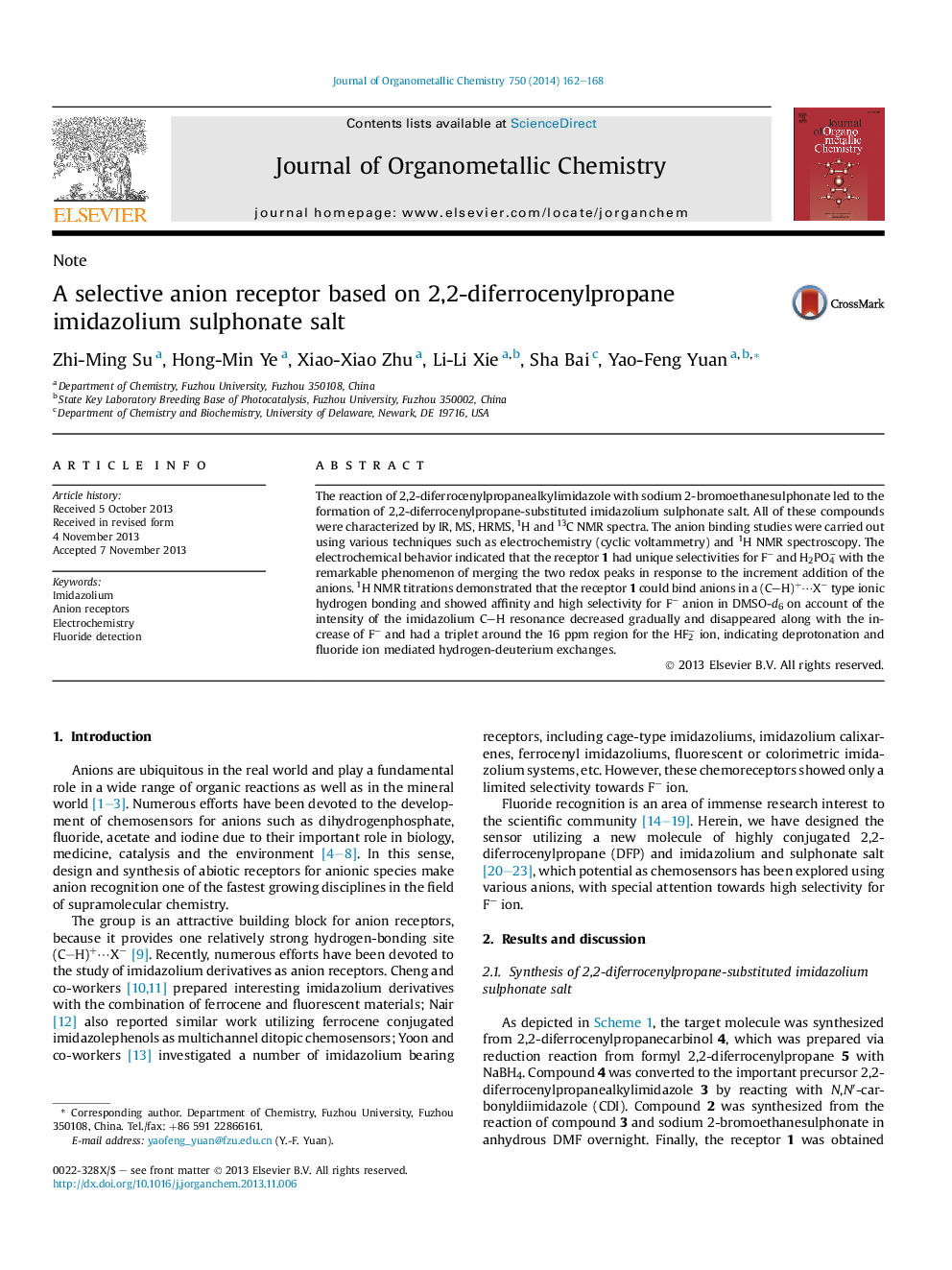| Article ID | Journal | Published Year | Pages | File Type |
|---|---|---|---|---|
| 1322563 | Journal of Organometallic Chemistry | 2014 | 7 Pages |
•2,2-Diferrocenylpropane-substituted imidazolium sulphonate salts were synthesized.•Receptor 1 had unique selectivities for F− and H2PO4− in the electrochemical behaviors.•Receptor 1 had high selectivity for F− ion in DMSO-d6 in 1H NMR titrations.
The reaction of 2,2-diferrocenylpropanealkylimidazole with sodium 2-bromoethanesulphonate led to the formation of 2,2-diferrocenylpropane-substituted imidazolium sulphonate salt. All of these compounds were characterized by IR, MS, HRMS, 1H and 13C NMR spectra. The anion binding studies were carried out using various techniques such as electrochemistry (cyclic voltammetry) and 1H NMR spectroscopy. The electrochemical behavior indicated that the receptor 1 had unique selectivities for F− and H2PO4− with the remarkable phenomenon of merging the two redox peaks in response to the increment addition of the anions. 1H NMR titrations demonstrated that the receptor 1 could bind anions in a (C–H)+⋯X− type ionic hydrogen bonding and showed affinity and high selectivity for F− anion in DMSO-d6 on account of the intensity of the imidazolium C–H resonance decreased gradually and disappeared along with the increase of F− and had a triplet around the 16 ppm region for the HF2− ion, indicating deprotonation and fluoride ion mediated hydrogen-deuterium exchanges.
Graphical abstractChemical structure of receptor 1.Figure optionsDownload full-size imageDownload as PowerPoint slide
